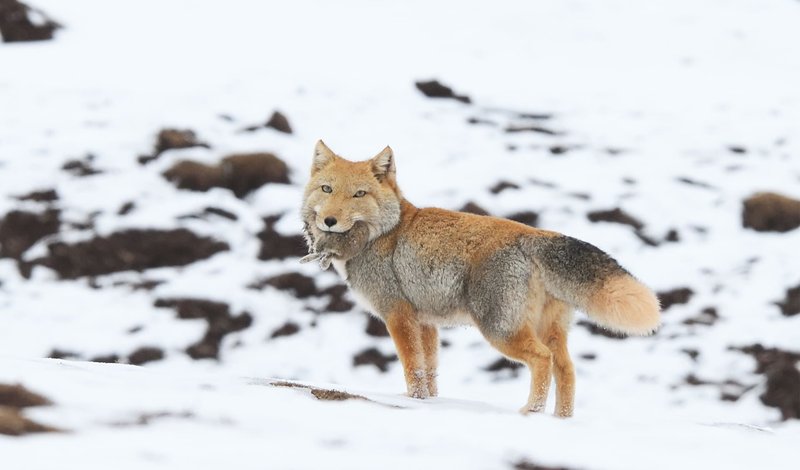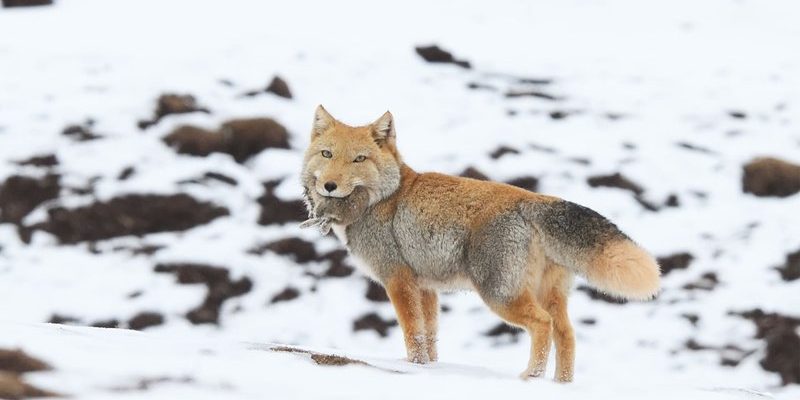
The Tibetan fox is part of a larger family of canids, which means it shares a distant relationship with dogs, wolves, and domestic pets. Understanding its evolutionary journey can shed light on how it has become uniquely suited to life in the high mountains of Central Asia. Let’s dive into its past, exploring how the Tibetan fox came to be the resilient animal we see today.
The Origins of the Tibetan Fox
The Tibetan fox (Vulpes ferrilata) is a member of the *Vulpes* genus, which includes other fox species like the red fox and the fennec fox. To understand its origins, we need to travel back millions of years. The *Vulpes* genus evolved around 10-15 million years ago in Asia. These early foxes were more generalized predators, but as they spread across various landscapes, they adapted to different environments.
The Tibetan fox specifically adapted to the harsh climates of the Tibetan plateau, a high-altitude area featuring grasslands and rugged mountains. This unique habitat played a crucial role in shaping its traits. With an extremely varied diet, including small mammals like pikas and hares, the Tibetan fox developed hunting strategies that suited its environment. Its keen sense of hearing helps it locate prey hidden beneath snow or tussocks of grass, which is essential for survival in such challenging conditions.
Physical Characteristics Adapted for Survival
You might be wondering what makes the Tibetan fox physically distinct from other foxes. Its most notable feature is its thick, luxurious coat, which provides insulation against freezing temperatures. The fur is usually a mix of gray and brown tones, helping it blend seamlessly into the rocky landscape. This camouflage is not just for show; it plays a critical role in hunting and avoiding danger.
Another fascinating aspect of its physicality is its face. The Tibetan fox has a flat snout, which, unlike other foxes, gives it a more distinct appearance. This adaptation helps it in various ways. For instance, a broader face allows for better olfactory senses, crucial for detecting food and predators in the open terrain. Additionally, its bushy tail serves multiple purposes. Not only does it help with balance, but it also acts as a warm blanket for the fox when it curls up in the cold.
Behavioral Adaptations in a Harsh Environment
Surviving in a high-altitude environment isn’t just about physical traits; behavior plays a significant role, too. The Tibetan fox is primarily a solitary hunter, employing stealth and patience to catch its prey. Unlike pack hunters like wolves, the Tibetan fox relies on its own skills and strategies, allowing it to navigate the sparse landscape independently.
Interestingly, these foxes are also known for their cleverness. They often use other animals, such as buzzards or ravens, to help locate food. This behavior showcases their intelligence and adaptability—traits that are essential for survival. By observing the activities of these birds, the Tibetan fox can identify where prey is hiding and make its move. Talk about teamwork in the animal kingdom!
The Role of Environment in Evolution
The Tibetan plateau is renowned for its extreme climate, with temperatures often dropping below freezing. This harsh environment has significantly influenced the evolution of the Tibetan fox. Over time, individuals that could better regulate their body temperature and find food sources survived and passed on their genes. This natural selection process has sculpted the fox’s abilities, creating the resilient creature we see today.
Moreover, the geological changes in the region have also played a part. As the Tibetan plateau rose and environmental conditions changed, the adaptation process accelerated. The fox’s ability to thrive on a diverse diet—including small rodents, birds, and even some plants—illustrates its flexibility. This adaptability to shifting conditions highlights how evolution is a constant journey, pushing species to respond to new challenges.
Conservation Status and Future
The Tibetan fox is currently classified as of “Least Concern” by the IUCN, which is a relief considering many species face extinction threats. However, human activities and climate change pose significant challenges. The melting of glaciers and shifts in vegetation due to rising temperatures can disrupt their habitat. Additionally, habitat fragmentation from livestock farming and urbanization can lead to decreased food availability.
Efforts to protect the Tibetan plateau are crucial for ensuring the future of not just the Tibetan fox but the entire ecosystem that supports various unique wildlife. Conservation initiatives focusing on habitat preservation, sustainable grazing practices, and environmental education can make a difference. Recognizing the delicate balance of this ecosystem is essential for maintaining the survival of such a unique and extraordinary species.
The evolutionary history of the Tibetan fox is a fascinating example of adaptation and survival in one of the world’s most extreme environments. Its unique physical and behavioral traits showcase how nature’s challenges can shape a species over time. From its thick coat and flat face to its clever hunting strategies, the Tibetan fox is perfectly suited for life on the Tibetan plateau.
As we look to the future, it’s vital to remember the importance of conserving not just the Tibetan fox, but the entire ecosystem it represents. By protecting their habitat and understanding their role in the environment, we can ensure this remarkable animal continues to thrive for generations to come. So, the next time you think about evolution, consider the Tibetan fox—a small but mighty testament to nature’s resilience!

